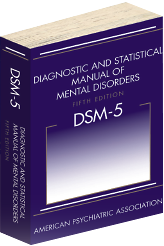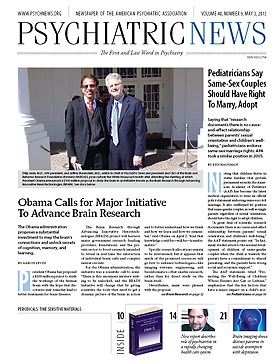Mild neurocognitive disorder, previously in the appendix of DSM-IV, will appear in Section II of DSM-5 in the chapter on neurocognitive disorders, recognizing the many patients seen by clinicians who do not meet DSM-IV criteria for dementia but who are nevertheless clinically impaired.
The inclusion of mild neurocognitive disorder in the neurocognitive disorders chapter of the revised manual reflects a body of research emerging since DSM-IV demonstrating that individuals with Alzheimer’s and other neurocognitive disorders may begin showing mild signs of cognitive impairment years before their diagnosis and may have neuropathological changes even before the onset of mild symptoms.
“In recent years, there has been an emergence of a new construct driven by neurology but cutting across the entire field of neurocognitive disorders, but especially Alzheimer’s, indicating that we need to move ‘upstream’ in terms of making a diagnosis,” work group chair Dan Blazer, M.D., Ph.D., said in an interview. “People are coming into our offices not meeting criteria for a major neurocognitive disorder but who are clearly impaired. These are people who can live alone, but who are struggling with it, who can get to the store on their own but may need a map.
“These are individuals who, if you submit them to neuropsychological tests, clearly have abnormalities,” he continued. “They are not dramatically off the scale, but tests provide objective evidence for subjective clinical impressions. And there are emerging studies of people with Alzheimer’s showing neuropathological changes even before symptoms become apparent at all.”
The chapter on neurocognitive disorders is the 17th of Section II in DSM-5, to be available later this month. The 18th chapter on personality disorders includes no changes to DSM-IV criteria; however, a dimensional approach to the assessment of personality and the diagnosis of personality disorders is included in Section III. And the 19th chapter, on paraphilic disorders, contains no alterations to criteria, but does entail some important conceptual reformulations.
In an interview earlier this year with Psychiatric News, DSM-5 Task Force Chair David Kupfer, M.D., outlined some of the overarching conceptual ideas that have informed the development of diagnostic criteria and the organization of the text. These include incorporation of a developmental approach to psychiatric disorders, a move toward the use of dimensional measures to rate severity and disaggregate symptoms that tend to occur across multiple disorders, harmonization of the text with ICD, and integration of genetic and neurobiological findings by grouping clusters of disorders that share genetic or neurobiological substrates (Psychiatric News, January 18).
DSM-5 has three sections: Section I gives an introduction with instructions on how to use the manual; Section II outlines the categorical diagnoses according to a revised chapter organization that eliminates the multiaxial system; and Section III includes conditions requiring further research before their consideration as formal diagnoses, as well as cultural formulations and other information.
Kupfer said the classification of disorders is largely harmonized with the World Health Organization’s International Classification of Diseases (ICD) so that the DSM criteria sets are more parallel with the proposed ICD-11.
There are now two major diagnostic categories in the chapter on neurocognitive disorders: mild neurocognitive disorder and major neurocognitive disorder (the latter replaces “dementia” of DSM-IV). And for each of these there are etiological subtypes, also having their own separate criteria: Alzheimer’s disease neurocognitive disorder (NCD), vascular NCD, frontotemporal NCD, Lewy bodies NCD, traumatic brain injury NCD, Parkinson’s disease NCD, HIV infection NCD, substance-/medication-induced NCD, Huntington’s disease NCD, prion disease NCD, NCD due to another medical condition, and unspecified NCD.
Blazer acknowledged a possible downside to the category of mild neurocognitive disorder and cautioned against arbitrary application of the diagnosis. “Individuals wishing to enter a residential retirement community can sometimes be denied entry if they carry this diagnosis,” he said.
But the quest among researchers and clinicians in the Alzheimer’s field—as well as family and patient advocates—for earlier diagnosis and treatment made inclusion of the diagnosis in Section 2 very compelling. He added that inclusion may help to spur development of better treatments.
“In the Alzheimer’s field, where it is goes by the name of ‘mild cognitive impairment,’ this is a train that has already left the station,” Blazer said. “Our work group included a neurologist [Ronald Peterson, M.D, Ph.D.], who informed us that if we did not have this category, we would be very much behind what is going on in the mainstream of Alzheimer’s treatment and research.” ■
A fact sheet and two video interviews with Daniel Blazer, M.D., Ph.D., on mild neurocognitive disorder can be accessed by going to
http://www.psychiatry.org/dsm5 .

